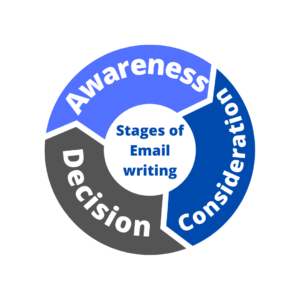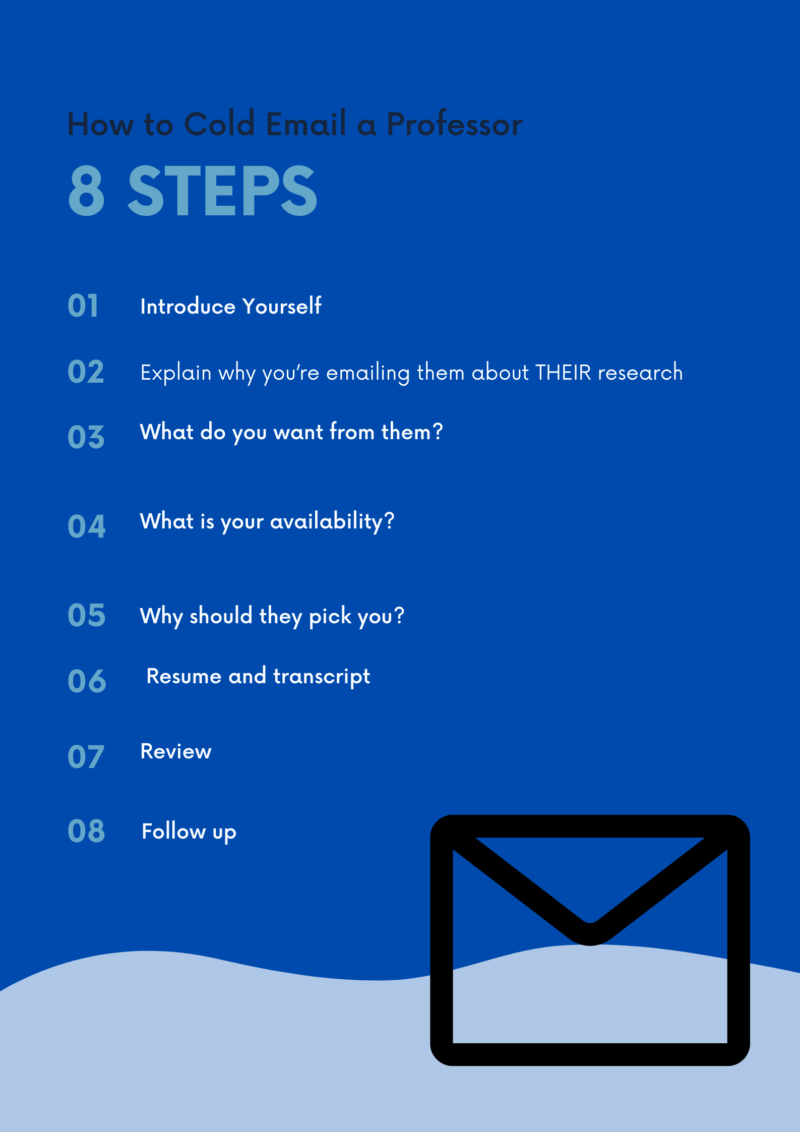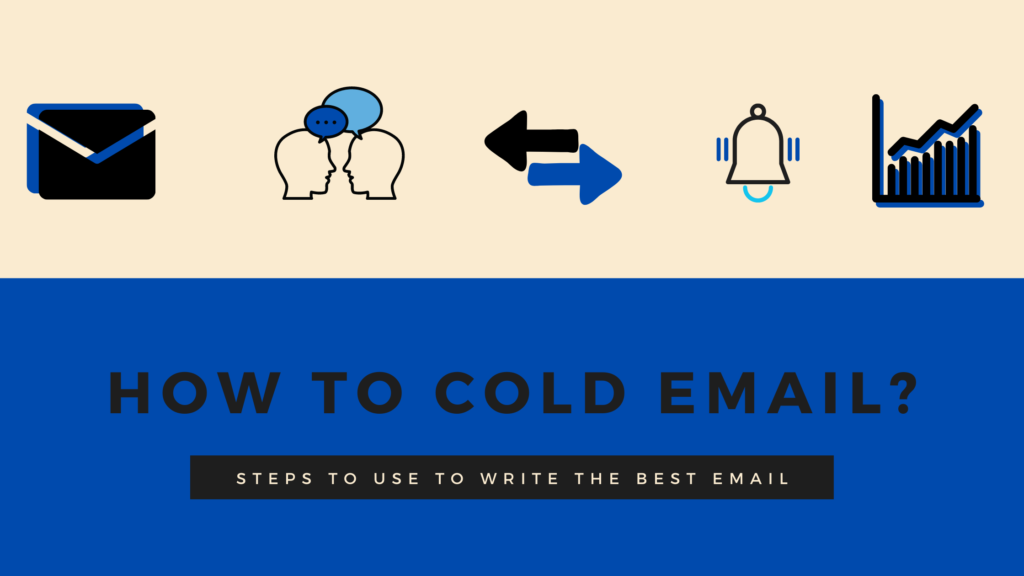Introduction
Reaching out to professors via cold email is one way to get a research opportunity at school. Voluntarily reaching out to professors and starting off the conversation can lead you to a number of opportunities and it will definitely open doors to some great experiences.
What is a cold email?
Now the question is, What really is a Cold Email. Cold emails are unsought means of conversations that are sent to a specific individual who has very sparse, or no details about you. We call the receiver of such emails, Cold Leads. Cold Emailing is something very different from warm or transactional emailing and hence, it is important we do not confuse between the two.
It is also important that we follow certain steps in the process of cold emailing or otherwise, it may be considered spam by spam filters and reported. Cold Email is not spam. It is often a personalized, one-to-one message to a specific individual. We may use some templates to write a cold email, but it is important to personalize a cold email so that we can create a connection with the receiver who can be an ally in the future, and it all comes down to our one cold email.
Why Write a Cold Email?
1. Least Intrusive:
Nobody likes to be disturbed in their lives. By Cold Emailing, we assure that it is the least intrusive method to contact the prospects. Unlike cold calling, it assures that we are not barging into the busy lives of the Cold Leads.
Also, Cold Emailing professors is a better option as we do not know anything about our leads, hence, emailing them would be an easier approach and you will not have the fear of rejection. Shooting your shot gets way easier and convenient this way.
2. Cold Email Can be personalized. And Scaled!
As we discussed before, the personalization of a cold email can improve your chances of getting a response. It dramatically improves your chances of landing that particular offer or position if you shoot your shots in the right direction by researching about the lead and customizing your approach accordingly.
So, always research your lead and throw the darts with the information you get. Remember, research is the key.
3. Great ROI
The return of investment on cold emailing is very high. It is sometimes unbelievable that such unsought means of conversation can be of such a high value. You can Email 10 people who can be of value in a single day and there are great chances that you will receive a reply from 7 of them. How cool is that!
But remember, your email needs to be on point and properly structured for you to expect such reply rates. (more about this further in the blog)
How to write a Cold Email?
The cold lead knows very little or nothing about you. So, the cold email body is like your blank canvas and you are the Picasso. The reader starts off with a very little idea about you and by the end, they should be able to understand your expectations from them and the value you have to offer their company. They should be ready to take the desired action by the end of your email.

– Awareness Stage
This is the stage where you are to build a good first impression in front of the Cold Lead. the prospect builds a reputation about you in this stage so you have to take special care about writing the ‘FROM’ and ‘SUBJECT’ lines of your cold email.
– Consideration Stage
The stage where your Lead starts to think about the value you have to offer their company. You have to build interest in this stage and offer something valuable for their organization or company by providing an ‘INTRODUCTION’ and the ‘VALUE PREPOSITION’. If done right, they turn their interest into serious consideration.
– Decision Stage
Your Lead is now hooked. If you are able to lure your reader to this stage of your email, you would not want to mess up now. It is now time that you remind them of the actual aim of this email and politely ask them to make a decision by including a ‘CALL TO ACTION’ and ‘SIGNATURE’.
– Call To action
A CTA or Call To Action is the statement or disclosure that drives the Lead or prospect to action. Here, you need to ask yourself the aim of sending that email and encourage your prospect to act upon that. Did you want an internship at that company, did you want them to respond to your email, did you want them to call you or start a free trial? In this stage, you ask them to do that, as politely as possible.
It is very important that you nail this step of writing a cold email as this is the point where you can land a possible business opportunity or whatever the aim of your writing that cold email is.
A good CTA helps you build a possible connection with your prospect. It helps you to know your ‘Cold Lead’ a bit more and bridges the gap between ‘an unsolicited approach’ to a ‘possible business opportunity’.
Four techniques to craft an effective Call To Action
![]()
Your Call To Action is totally dependent on the body of your Email and the kind of response you want from the Cold Lead but there are some techniques you should keep in mind while writing the CTA as this is the point where you can excite the prospect:
1. Reiterate the value proposition
Recapitulate the value proposition you are presenting to the company in your CTA. Gently remind the company of the value you are bringing to their firm and include a ‘because’ factor. A study confirms that people respond to a request more if there’s a ‘because’ aspect.
2. Provide a specific time and date
You should be specific about your availability and provide them with proper date and time at which you want them to contact you. It will not burden them as these decisions generally take a very long time to be processed and there are good chances that your ‘meet soon’ never happens.
So, providing a date and time will be beneficial and they will more likely get back to you if the provided time is convenient for them.
3. Request a connection
Do not hesitate to reach out to the executive of the company if you are hesitant about who to contact. Take this opportunity and tell the executive about your skills and how you can use them for their company. If they think that you are of some value, they will be more than happy to connect you to the recruiter of the decision-maker. Always leave a positive impact, no matter who you are connecting to.
4. Decision Stage: Signature
An often overlooked component, a well-designed signature can be like the cherry on the top of your cold email.
Cold Email Signature
1. What is a Cold Email Signature
An email signature is a small part of the email where you can showcase the logo of your company and what you or your company does.
2. Why is a Cold Email Signature important?
So far, your email has been all about the prospect only. Now, this is the time you can shine. A cold email signature is your chance where you can tell the prospect more about yourself. You can also attach the details about where they can find more about you. This will let them know that you are open to their perusal.
3. What should a Cold Email Signature contain?
A cold email signature generally contains all the necessary details about you and your company. But you should not bombard your prospect with all kinds of images and links as this can be distractive. Your signature should have all the information about ‘WHO YOU ARE’ and ‘WHY YOU MATTER’. Add some facts about you and your company along with some accomplishments. This is your chance to shine.
What are the main elements that can help to write a good value proposition?
1. Provide benefits
It is no secret that people read only something that provides them with benefits. You have to make sure that you are providing their company some benefit. Your value proposition should be all about your prospect and what you can provide to them. This will pique their interest in your email and there will be good chances that they reach back to you.
2. Explain with clarity
The shorter and clearer the better. You have to conclude your point as short as possible. So, it is very important that you are clear with your prospect and you do not beat about the bush. You are required to cut to the chase and be clear about what you can provide to their company and what you want from them in return.
How to Cold Email a Professor?
Cold emailing a professor can be a bit tricky as there are many rules and boundaries you need to be careful of, but in this blog, we will help you out in your journey to cold emailing a professor in the best way possible.
First, you might wanna go through the faculty website of the professor as most of the schools nowadays follow a strict protocol about respecting boundaries between a student and a professor. This way, you can extract as much information as possible. You would not want to miss out on a research opportunity just because you lack the research part.
THE EMAIL:

Step 1: Introduce Yourself
Address the Professor in a mannered way (“Dear Professor <Name of the professor>”). Keep it simple, but significant. Mention your name, major, and year in a sentence or two.
Step 2: Explain why you’re emailing them about THEIR research
Show them that you are here for a cause. Professors love geeks. Show them that you did your research and politely mention their ongoing research or a project you like. This will prove that you are serious about this and it is not just another random research email. Also, do not be crazy specific, you are not a stalker.
Step 3: What do you want from them?
Don’t show that you are reluctant by writing ‘any position that is available’. You should clearly mention the position you are looking for. Also, mention the timing of this position, i.e, spring, fall, or summer. Be specific. Even if the desired position is not available, your professor might offer you some other position if they like your cold email enough.
Step 4: What is your availability?
You should have at least 8-10 hours in your day free if you want a research position. Be clear about your availability and the number of hours you are willing to dedicate. They might even wanna know about your semester schedule. Also, you should provide them with your availability if you want to fix a call or meeting. If they find it convenient, they will know when to contact you after the first email. In case the professor has office hours, you should mention that you plan on visiting them next week around a particular time.
Step 5: Why should they pick you?
This bit can be a bit hard to explain. You should be clear in your vision and good with words to impress the professor in this part. In case you do not have any prior work experience, fret not, use that opportunity to explain to the professor that this fact only makes you even more eager to do your best to earn a relevant experience. Try to flaunt your academic skills and your grades.
Step 6: Resume and transcript
Make sure that you attach your resume and transcript and mention that you have attached them along with your email.
Step 7: Review
Always review your email to look up any possible discrepancies. You can also ask your friend to read it. This way you can ensure that the email sounds professional and has the perfect closing and starting.
Step 8: Follow-up
Make sure you write at least one follow-up email if you do not receive a reply within the next 10 days. Usually, professors are very busy and it is possible that they miss your email. You should introduce yourself again in your follow-up email with a polite reminder referencing your previous email.
What should be the Email Pattern for a professor?
Subject – the subject of the email should be catchy.
Greetings– be polite as these professors have years of experience and know a lot of things. So, you can show respect by being polite.
Profile – you should properly introduce yourself in the first paragraph of the email.
Make a connection – list your skills and endorsements related to the field of expertise of the professor you are emailing. It is important that you have something in common in order to make them a possible connection.
Closing line – mention why you contacted the professor.
Example Email to a Professor
Dear Professor (name of the professor),
I am a second-year student and I attended your seminar on Switching Theory. I found your current project very interesting and I would like to know more about it.
You mentioned a summer training program after which we can join the research positions for your upcoming project. Is it okay if I visit your office sometime in the upcoming week and we discuss it further as I want to join the same.
Hoping to hear from you soon
Regards,
(Your name)
Some Do’s and Don’ts while sending an email to a Professor
Dos:
1. Choose the subject line carefully
As discussed above, your subject line should be catchy and straightforward. It is better to write the aim of your email in the subject line directly rather than puzzling the reader. A clear subject line will help the professor know what you are expecting from them and it will increase the chances that they read your email.
2. Be polite and formal
Always be polite while writing the email body. You should maintain a formal and polite attitude throughout the email. Keep in mind that being polite does not mean you have to be creepy, using overwhelming words like,’ I absolutely adore the wonderful work you have done on that awesome project…’. Refrain from going over the top.
3. Keep attention to your email body
Always speak to the point as your email body is a very important aspect of your email. If you beat around the bush, it will only confuse the professor and slow down the process. This can also result in you getting rejected because if you sound confused in your email, that is not a great first impression.
4. Mention your substantial part
Always mention your area of expertise, skills, accomplishments, experience, etc in a single email line in a clear way.
5. Salutations
Sign off your email in a respective way as the professor took out their valuable time out of their day to read your email. Sign off by wishing them the best or thanking them for their time. You should also add your name at the end because it is courteous and respectful.
Don’ts:
● Don’t email the professor frequently, keep a good amount of gap between the first email and the follow-up email.
● After getting an answer to the email, reply in your best way as fast as you can.
● Never hurry
● Do not write huge emails, it might bore the professor. 4-10 lines separated into 3 paragraphs is the ideal length of a cold email to a professor.
● Always send the email during work hours as your email might end up getting lost in their inbox otherwise.
Common Mistakes students make while cold emailing a professor
1. Visit the professor’s website –
Do not read the professor’s website in its entirety. There is a lot of information on the professors’ websites. There is often a section on the professor’s website on “future students”, you should pay special attention to it as it might help you in developing a good body for your email.
2. Don’t use copy-paste email –
NEVER send general emails that are available. Professors receive hundreds of emails every day and it is important that your email sounds original and relevant to them. You can use certain templates but always remember that research and personalization is very important aspect to make a connection.
3. To the point –
we have been saying this for a while now. Always be specific about your aim of writing that email and make sure you conclude it within 250 words.
4. Focus on what he looks at –
always focus on what you are looking for. Talking about something else won’t do you any good. You need to mention why you are good for the role and you have all the things that are needed for the role.
5. Grammatical mistakes –
do not make any grammatical or spelling errors in your email. Do continuous grammatical and spelling checks before sending the email and ask your friend to read it so they can suggest any possible edits.
6. Attach documents-
always attach a CV to the email as not everything can be concised in those 250 words. That’s when your CV comes into play!
Some Elements of a Perfect Email

Element #1: Salutation–
using the right tone to start the email is necessary. It makes your email sound professional and well-planned. You can use various salutations like ‘dear’ or ‘hello’.
Element #2: Honorific–
use a proper honorific title for your professor as it means a lot to them even if it does not mean anything to you. These people have worked very hard to earn those titles and you should be a little respectful towards them. Some students ignore this fact and end up getting rejected for being disrespectful. You can use the title ‘Dr’ if the professor holds a Ph.D. but still, using a professor would be a safer choice. Even if they do not hold a doctorate, you need to address them as a professor because they are teaching a college class depicting a professor. Also, the word professor is gender neutral which acts as a plus point.
Element #3: Name–
many students do not know the actual name of their professor, it is shocking but true. Look up the name of the professor as it is not a herculean task. Use the correct name and spelling of the professor’s name.
Element #4: Meaningless Nicety–
it is never a bad idea to start off by saying nice things
like, “I hope you are in the pink of your health” or “I hope you had a great weekend”. It is a good way to break the ice as professors like that the students think they have a life apart from being their professor. You can say anything here, it is just an act of politeness and genuine interest that counts for something.
Element #5: Reminder of how they know you–
if you are contacting your professor for the first time, this point can really help you. It is not compulsory that professors remember you by your name. In fact, very few are good at remembering names, so you should not presume that they can always put your face with your name. You can mention any conversation you had in the part of any sort of interaction, really, like, “we had a conversation after the class when I wanted to ask a doubt on Digital Frequency Meter, that one time”. If you never interacted with them, you can express your interest by saying, “ I plan on enrolling in your class next semester”. You just have to make a connection here, make sure it counts.
Element #6: The real reason for your email–
this is the prime reason for you writing this email, so make sure you make it interesting. You have to explain the reason thoroughly in a polite yet clear way. State what you are expecting from the professor without making it sound like a demand. If it is hard for you to explain your reason in a line or two, you can ask the professor for a meeting in person where you can take the discussion further.
Element #7: A super polite restatement of your request –
if you want an answer to a question you asked while writing the email, you can politely say that “please get back to me at the earliest of your convenience, I will be very grateful”. If there is anything else you want them to do, mention it very politely and clearly. This will help them put it on their to-do list.
Element #8:
Sign-off- conclude the email by saying ‘thank you’ as it is always appropriate. You can also write some other phrases like ‘All The Best’ or ‘Best’, ‘sincerely’, etc.
Follow up email
1. Do I have to write a follow-up email to the professor?
You should write a follow-up email if you have not received a reply within a week of sending it. Writing a follow-up email is never a bad idea. The content of the follow-up email should not exceed more than 150 words. Mention some basic details about yourself again and refer to your previous email to inform the professor that you are yet to receive a reply. Often, emails are overlooked as professors receive hundreds of emails within a day and it is hard to keep track, writing a follow-up email will help in this case.
2. Do I need to send a second follow-up email after no response from a professor I would like to work with?
The answer is- why not? If you think you are the right person for it, then, by all means, go for it. Politely remind them about your previous email in not more than 100 words. It should be short and sweet. Tell them why they would be interested in working with you and not why you are interested in working with him. Make the right choice while choosing words for a second follow-up email.
3. How do I respond to a professor who emailed him that he has no available vacancies in his lab?
First off, start by saying thanks for the possible opportunity because this means that the professor was interested in working with you. You should mention your availability, interest, and confidence in working with him in the future so if there is any position and funding next year, they can consider you as a possible option for the same.
You can write, “Thank you very much for your last email. If there is an opening in the next 3-8 months, do contact me. I would like to work with you so you can look for my application. Also, if there is any other research group in your department that offers scholarships that I missed, kindly let me know.”
4. How can I follow up with a professor after meeting him once?
You can share small updates regarding your project since you have met before. Asking about how a particular idea is also a possible option. Getting feedback on these things helps you break the ice and makes way for new opportunities.
5. How can I write an email to the professor who asks me to reply by email if I am interested in joining his workshop next year?
Let them know how thankful you are that they considered you for the offer. Ask about some training that may help you. Mention what interests you in their lab and how it would help you if you are a part of that particular research position. Talking about trust and respect is also a good option; how you expect to be a part of their workplace, the activities, and the way you can be its part.
6. How do I reply to a professor who has sent a mail saying that he has no open positions available in his lab?
This is very kind of the professor if the professor replies to you saying this. This means that they are interested but no positions are available right now. You can reply by saying thanks for their reply and also mention that they can consider you for any future offers if any.
7. What to do if I wrote the first email and the Ph.D. professor didn’t reply?
Re-send the email following all the email etiquettes and important points mentioned above in this blog if you wrote a long/unprofessional email to the professor as this might be the reason they did not reply.
8. What you should include in the follow-up email?
● Introduce yourself again in a single line
● Acknowledge the email by the professor
● Refer to the previous email sent by you
● Express gratitude
● Ask for help/ clarify something
9. What thing you should check before writing a follow-up email?
● Check your spam folder
● Check-in with the office work hours
● After waiting for a while, send a polite follow-up email
10. Things you should consider for including in a follow-up email to a professor
● thank the professor after your first email, your interview, or after the meeting
● A follow-up email should be sent after a week
● include the reason why you are a good candidate for the job
● write down your reference information in the follow-up email
● Make the email short and concise
Follow-up email templates
1. Simple follow-up email to remind him.
“Dear Professor Samuels,
This is Robert. I work at XYZ Company in Florida as the Assistant Manager in the Electrical Department.
I sent you an email a few days ago enquiring about a Ph.D. position. I just wanted to follow up and see if you received my email.
Hope to hear back from you soon!
Sincerely,
Robert Smith
Phone Number – 1234567890
2. Follow-up email to if you have already discussed with the professor
“Dear Professor Samuels,
This is Robert. We had a word on Thursday about a Ph.D. position in your laboratory.
You mentioned in our interaction that you will get back to me with the details of the next steps. I wanted to follow up on the same.
If there is anything that you need from my end, please let me know.
Sincerely,
Robert Smith
Conclusion
After reading this blog, you have learned a very important skill. Crafting professional cold email is a skill that is much demanded in the professional world, especially while emailing professors it is even more important as if you play your cards right, you will end up getting the response you desire.
Professors are also human beings who want everyone to think that they are so. We might consider them as grumpy human beings who just take a class and leave, and rightly so. We are students who have a few professors but the professors have hundreds of students and they need to answer all of them. So, it is very important that you respect them and their time and craft a cold email that is not only short and concise but also catchy at the same time. Who knows you end up getting your desired position just because of a short, well-crafted email.




